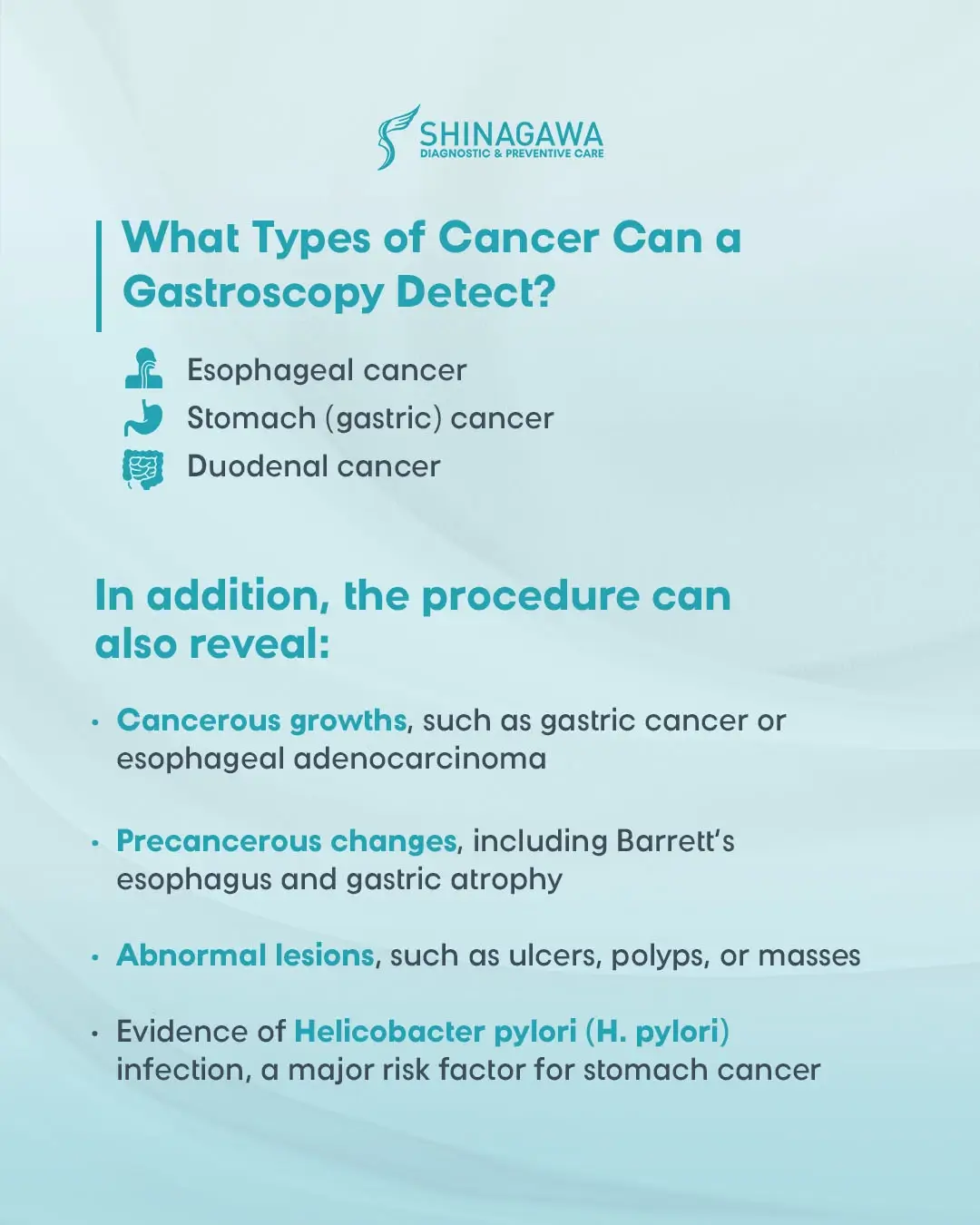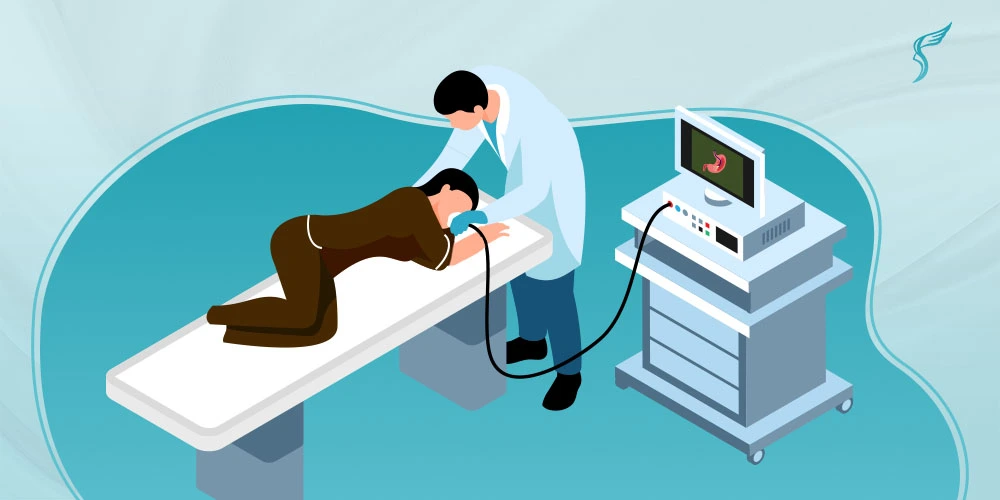Cancers in the digestive system often progress quietly. Early symptoms are subtle, frequently mistaken for common digestive issues such as acid reflux, bloating, or indigestion. Because of this, many cases are only discovered once the disease has advanced.
To detect these conditions early, doctors often recommend undergoing a gastroscopy — a procedure that allows specialists to directly examine the esophagus, stomach, and upper part of the small intestine.
While the idea of having an instrument inserted through the mouth may sound scary and painful, gastroscopies are actually a safe, accurate, and a minimally uncomfortable procedure. Understanding how it works, what it can reveal, and the types of cancers it can help detect will show why it remains one of the most effective tools for early cancer detection in the digestive system.

What Types of Cancer Can a Gastroscopy Detect?
Through a gastroscopy, doctors can detect early signs or presence of cancers. Specifically, it can help detect:
- Esophageal cancer
- Stomach (gastric) cancer
- Duodenal cancer
In addition, the procedure can also reveal:
- Cancerous growths, such as gastric cancer or esophageal adenocarcinoma
- Precancerous changes, including Barrett’s esophagus and gastric atrophy
- Abnormal lesions, such as ulcers, polyps, or masses
- Evidence of Helicobacter pylori (H. pylori) infection, a major risk factor for stomach cancer
How Gastroscopy Detects Cancer
Step 1: Visual Examination
During a gastroscopy, a thin, flexible tube with a tiny camera (endoscope) is inserted through the mouth. This gives doctors a clear, real-time view of the digestive tract’s lining, allowing them to spot anything unusual such as red or inflamed areas, abnormal growths, masses, or ulcers or changes in color or texture of the tissue.
Step 2: Biopsy for Accurate Diagnosis
If the doctor sees any suspicious area, they can take a biopsy — a small tissue sample — using tiny instruments passed through the endoscope. The sample is then examined under a microscope to determine whether cancer cells are present, the type and stage of the cancer, and if it’s benign (non-cancerous) or malignant (cancerous)
Step 3: Monitors Those at Higher Risk
For patients with a history of H. pylori infection, chronic acid reflux, gastric ulcers, or family history of stomach cancer, regular gastroscopy helps track any changes over time and catch cancer in its earliest, most treatable stages.
Get your Gastroscopy today at Shinagawa Diagnostic
While cancers in the upper gastrointestinal tract aren’t as common among Filipinos, early detection remains crucial, especially for individuals at higher risk.
Who Should Consider Getting a Gastroscopy
- Difficulty swallowing or painful swallowing
- Unexplained weight loss
- Persistent stomach pain
- Black or bloody stools
- Family history of gastric or esophageal cancer
At Shinagawa Diagnostic & Preventive Care, Gastroscopies are performed by our medical team who have undergone specialized training with Japanese medical experts. This ensures precise, thorough examinations that can help detect abnormalities and possible signs of cancer at their earliest stage.
Disclaimer: This article is for educational purposes only and does not replace professional medical advice. Please consult a qualified healthcare professional for an accurate diagnosis and treatment.

